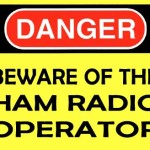Well, I have not posted for a long while — at least not here. Massive attack of the electrons, possibly a zombie attack!
Look:
And listen:

I found an interesting, and in-depth paper that has some practical solutions while engaging in an extensive discussion of transmission line and antenna theory. It’s on the http://www.kg4jjh.com/ site where you will find many other project ideas.
for benefit of copygator.
Posted a long story over at http://captainjustice.net/2010/07/18/marble-falls-tri-athlon/ — put it there so it would post to my Facebook page.
APRS, the Automated Packet Reporting System is a mystery to many — hams and “civilians” alike — and continues to be to me as well. It is often used for community events such as marathons and I thought this set of tracks from the 2010 Austin Marathon was interesting:
You can see several APRS units having been tracked here. This view was captured about 1pm with a 6 hour window looking backwards so what you see is virtually the entire APRS support for the marathon. I’m not sure what the AMDOWN-1 tracker was, but I’m suspecting it was a mobile digipeater to give better access into the APRS-IS system, i.e. feed the tracks into the internet.
These type events are done as a public service and also to drill the skills that may be needed for emergency communications.

Ham radio is a great hobby. There is an unlimited array of interests in which to be involved. My endeavor here is to share what I’m doing and learning in the hopes that others will discover the joys of “hamming.” My main blogging is over at Musings of Captain Justice.
Also known formally as the Amateur Radio Service, ham radio is the ultimate geek hobby. From the days of Marconi, Western Union telegraph and other primitive forms of communication, amateur radio now melds radio, computers and space satellites; and in addition to voice and morse code communications, includes digital modes of email over the airwaves and the equivalent of instant messaging.
I was a ham years as (WB5IUT) and had let my license lapse. I am now (thanks to the ‘vanity’ callsign program) KA5GIL.
 My present equipment includes a mobile VHF/UHF rig (which is what hams call their radio — a Yaesu FTM-350) and a base/portable/mobile HF/VHF/UHF rig (Icom IC-7000). My antennas at the base station include for HF, a 20/40 meter trap dipole and a G5RV, each suspended at about 35 feet. The base VHF/UHF antenna is a simple J-Pole.
My present equipment includes a mobile VHF/UHF rig (which is what hams call their radio — a Yaesu FTM-350) and a base/portable/mobile HF/VHF/UHF rig (Icom IC-7000). My antennas at the base station include for HF, a 20/40 meter trap dipole and a G5RV, each suspended at about 35 feet. The base VHF/UHF antenna is a simple J-Pole.
The antennas for the mobile include a 5/8 whip for VHF/UHF and Hustler center-loaded antennas for the HF rig. That setup is under construction at the moment but is just around the corner.
So what do hams actually ‘do’ with the hobby? The answer is too voluminous for a single website and these answers will be forthcoming.